Israel
Q230407Kingdom of Israel: the northern of the two Jewish states after the kingdom of Solomon was divided. Israel was a regional superpower, but unable to retain its independence in the face of Assyrian imperialism. The name "Israel" survived as the religious name of the Jews. This linguistic development is described here.
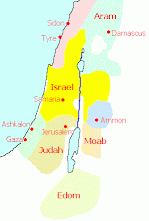
According to the Bible, the united kingdom of Solomon was divided after his death in ca.931. His son Rehoboam, we are told, increased the taxes, and provoked a rebellion of the ten northern tribes. They elected a king of their own, Jeroboam, and choose a new capital, Tirzah near Shechem. This was the beginning of the history of the two kingdoms: Israel in the north, with a swift succession of ten dynasties, and Judah in the south, where the house of David continued to rule until 587.
The Bible clearly prefers the southern kingdom. Judah remained more or less faithful to the Covenant, whereas the Israelites are said to have accepted foreign, pagan customs. Probably, the Biblical account is exaggerated. In both kingdoms, YHWH was worshipped among other gods; the north may have been a bit more tolerant towards other gods than the south, but monotheism, the Covenant, and the central position of the temple in Jerusalem, which are important in the Biblical narrative, are inventions from the age of king Josiah of Judah (639-609). By then, the northern kingdom had already disappeared for about a century.
The first six kings of Israel are only known from the Bible. (See table below; relatives in identical colors.) Jeroboam reigned for twenty-one years and was succeeded by his son Nadab, who was killed in a military coup. The new king was a soldier named Baasha, who tried to conquer Judah and had some success, but was unable to fight a war against the southern kingdom and its ally Aram-Damascus at the same time. Baasha's son and successor Elah was deposed almost immediately by the commander of the royal charioteers, who was in turn deposed in a countercoup staged by general Omri.
| Jeroboam | 930 - 909 |
| Nadab | 909 - 908 |
| Baasha | 908 - 886 |
| Elah | 886 - 885 |
| Zimri | 885 |
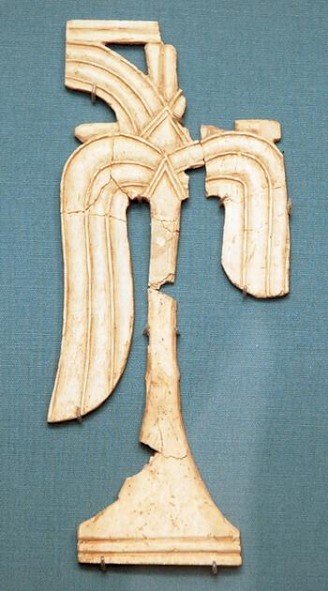
The new king was of a different caliber. Omri's reign marks the beginning of the golden age of Israel - yes, in fact, he created the first real state in the region. He conquered large parts of the country east of the river Jordan, including Moab, and fortified the border with several forts. He also gave the northern kingdom a new capital, called Samaria. The royal palace was built on a square platform of about 195x120 meters on a hill that rises more than 100 meters above the surrounding country and controls several main roads. Similar building projects are known from Jezreel, Hazor, Megiddo, and Gezer.
Omri's son Ahab brought the kingdom to even greater prominence and gained international recognition when he married Jezebel, the daughter of king Ethba'al of Sidon. Inscriptions erected by the kings of Aram-Damascus and Moab (the Stela of Mesha) prove that Israel had now expanded its frontiers to the north, west, and southwest, and in one Assyrian text, king Šalmaneser III comes close to admitting that he was defeated by a coalition of western states. In his account of the Battle of Qarqar (853), Šalmanaser lists his enemies troops, which -even when the numbers are exaggerated- gives an idea of the relative strength of several local powers:
- king Hadad-Ezer of Aram-Damascus: 1200 chariots, 1200 cavalry, 20,000 infantry;
- king Irhuleni of Hamath: 700 chariots, 700 cavalry, 10,000 infantry;
- Byblos: 500 infantry;
- Sumur: 1000 infantry;
- Irqanatu: 10,000 infantry;
- king Ahab of Israel: 2000 chariots, 10,000 infantry.
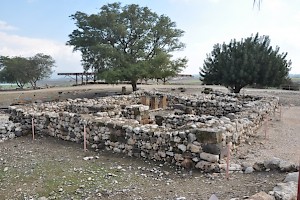
The secret of Israel's success was economic diversification. Unlike Judah, which remained a backward area, the northern kingdom was fully integrated in the near-eastern economy. It exported olive oil and seems to have had trade contacts (probably indirect, through Sidon) with Greece. Excavations at Samaria have brought to light stone capitals that strongly remind one of Aeolic capitals. However, many peasants found themselves in dire straits. The social history of Israel is the tale of increasingly poor farmers.
Israel had several temples, including one for the Canaanite god Ba'al. To orthodox Jews, this was of course unacceptable, and therefore, the Bible portrays Omri, Ahab, and Jezebel as the archvillains of sacred history, opposed by the prophet Elijah. This explains why the authors of the Biblical books of Kings seem to be denying or minimizing the successes of Israel, whereas Israel's enemies Aram-Damascus, Moab, and Assyria had no difficulty in stating that Israel was very powerful indeed.
In the mid-ninth century, the kingdom of Aram-Damascus became more powerful, and after the death of Ahab, war broke out between the two kingdoms. The Aramaean king Hazael defeated Jehoram of Israel; general Jehu became king of Israel; and he destroyed the temple of Ba'al in Samaria. The exact relation between these two events remains unclear. What is certain, however, is that Israel was in a crisis. According to the Stela of Mesha, Moab liberated itself.
| Omri | 884 - 873 |
| Ahab | 873 - 852 |
| Ahaziah | 852 - 851 |
| Jehoram | 851 - 842 |
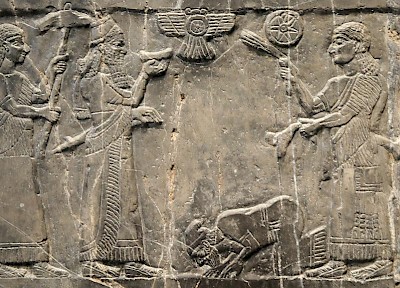
The supremacy of Aram, however, was not to last very long. Assyria returned to the west and attacked Damascus in 841. This changed the balance of power between Aram and Israel, which was now freed from military pressure. Of course, Jehu had to pay for his liberation, something that is shown on the Black Obelisk of Šalmaneser and mentioned in the the annalistic text of his eighteenth regnal year.
Israel had become a vassal of Assyria, and although it had to pay tribute, it could expand its frontiers. The economy expanded too. The highlands surrounding Samaria became the most densely populated part of the entire eastern Mediterranean. Inevitably, this increased the social problems. The prophets Amos and Hosea were among those who voiced protests.
Nevertheless, Israel had been restored and during the reign of Jehu and his descendants, which lasted almost a century, Israel was a very powerful state again. King Jehoash, for example, paid Assyria (mentioned in the Tell al-Rimah Stela), and this gave him sufficient room to attack Judah, pillage the temple of Jerusalem, and transport its treasury to Samaria. His son Jeroboam II, whose reign lasted more than forty years, seems to have been an efficient ruler, although he was lucky that the Assyrians attacked Aram again.
| Jehu | 842 - 814 |
| Jehoahaz | 817 - 800 |
| Jehoash | 800 - 784 |
| Jeroboam II | 788 - 747 |
| Zechariah | 747 |
| Shallum | 747 |
The death of Jeroboam II was the beginning of the end. His son Zechariah was assassinated by a man named Shallum, but Menahem staged a countercoup. His reign lasted ten years.
| Menahem | 747 - 737 |
| Pekahiah | 737 - 735 |
| Pekah | 735 - 732 |
| Hoshea | 732 - 724 (or 722) |
By now, however, the Assyrians, who had been Israel's protectors, were no longer content with a series of tribute paying vassal states in the west. They decided to add the fertile land of Israel as a province to their own kingdom, and became increasingly hostile. When Pekah had become king, after murdering Menahem's son Pekahiah, the Assyrians invaded Israel, defeated the king, and annexed the northern part of the kingdom.
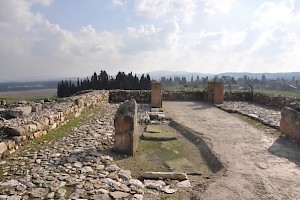
The Assyrian king Tiglath-pileser III made Hoshea king of Israel. He may have been a member of the old royal family of Baasha, a great-grandson of former king Elah. However this may be, Hoshea was the last man to rule in Samaria. When Tiglath-pileser was succeeded by Šalmaneser V (727), Hoshea decided to negotiate with Egypt. This was the pretext the Assyrians needed to invade Israel. Šalmaneser and his general Sargon defeated Hoshea and captured Samaria after a siege said to have lasted three years.
The prophet Micah said that the end of Israel was the punishment for the king's social policy - or lack thereof. To a certain extent, this was true. The peasants believed they had much to gain from a regime change.
Israel was ruled by kings from nine or ten separate families, which suggests a very unstable government. This, however, is untrue. In fact, from the reign of Baasha, there is continuity. Of course, his son was killed, but he was succeeded by Omri, a court official, who continued Baasha's policies. Jehu appears to have been a courtier of the Omrid dynasty, before he became king in the crisis that started when the last king of the house of Omri was dead. Jehu continued the same policy - economic development, disregard for the sanctuary of Jerusalem, polytheism, and military prowess. And when Jehu's dynasty came to an end, the usurper Shallum was immediately dethroned by another man from the establishment of Israel, Menahem. This means that from Baasha to Pekahiah, there was a far greater continuity in the government of Israel than appears at first sight.
The name "Israel" survived as the religious name of the Jews. This linguistic development is described here.